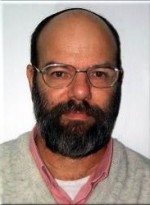שאול גוטמן

פרופסור אמריטוס
פרופסורים אמריטי וחברי סגל בגמלאות
טלפון:
+972-77-8872088
פקס:
+972-77-8875711
דוא"ל:
mergutm@technion.ac.il
חדר:
502, LD
Education
- 1967 - B.Sc., B.Sc., Faculty of Aeronautical Engineering, Technion - I.I.T.
- 1972 - M.Sc., in Mechanical Engineering Univ. of California, Berkeley, U.S.A.
- 1975 - Ph.D., in Mechanical Engineering Univ. of California, Berkeley, U.S.A.
Research Interests
- Root Clustering.
- Control of Uncertain Systems.
- Dynamic Games.
- Optimal Guidance.
- Min-Max Control.
Guest Appointments
- Res. Assoc., N.R.C., NASA Ames, Calif. (1975-1976)
- Visiting Professor, U.C. Berkeley (1981-1982)
- Visiting Professor, Georgia Tech. (1991-1992)
Industrial Experience
- MBT - Aircraft Industries (1970/1971)
- RAFAEL (1976/1977)
Public Activities
- Kneset Member (1992-96)
Honors and Awards
- The New England Academic Award (1989-1990)
- S. Gutman, "On Optimal Guidance for Homing Missiles", AIAA J. of Guidance and Control, Vol. 2, No. 4, pp. 296-300, 1979. Also (in Russian) J. of Rocket Technology and Cosmonautics, Vol. 17, No. 10, 1979.
- S. Gutman, "Uncertain Dynamical Systems - a Lyapunov Min-Max Approach", IEEE Trans., Vol. AC-24, No. 2, pp. 437-443, April 1979.
- S. Gutman and E. Paldi, "Worst Case Design for Robust Compensation", SIAM Journal on Control and Optimization, Vol. 41, No.1, pp.278-302, 2002.
- S. Gutman, Applied Min-Max Approach to Missile Guidance and Control, Progress in Astronautics and Aeronautics, Vol. 209, AIAA, 2005.
- S. Gutman, O. Goldan, and S. Rubinsky, "Guaranteed Miss-Distance in Guidance Systems with Bounded Controls and Bounded Noise", J. Guidance, Control, and Dynamics, Vol.35, No.3, pp.816-823, May-June 2012.
- M. Levy, T. Shima, and S. Gutman, "Linear Quadratic Integrated vs. Separated Autopilot-Guidance Design", Accepted by Journal of Guidance, Control, and Dynamics.
- S. Rubinsky, and S. Gutman, "Three Player Pursuit and Evasion Conflict", Accepted by J. Guidance, Control, and Dynamics.
בקרה אוטומטית - יציבות מערכות בעלות חוסר ודאות (שימושים לרובוטיקה, למבנים אלסטיים ולכלי טייס), יציבות יחסית, בקרה לא ליניארית, משחקים דינמיים - בעיות רדיפה והתחמקות. הנחיה אופטימלית.

